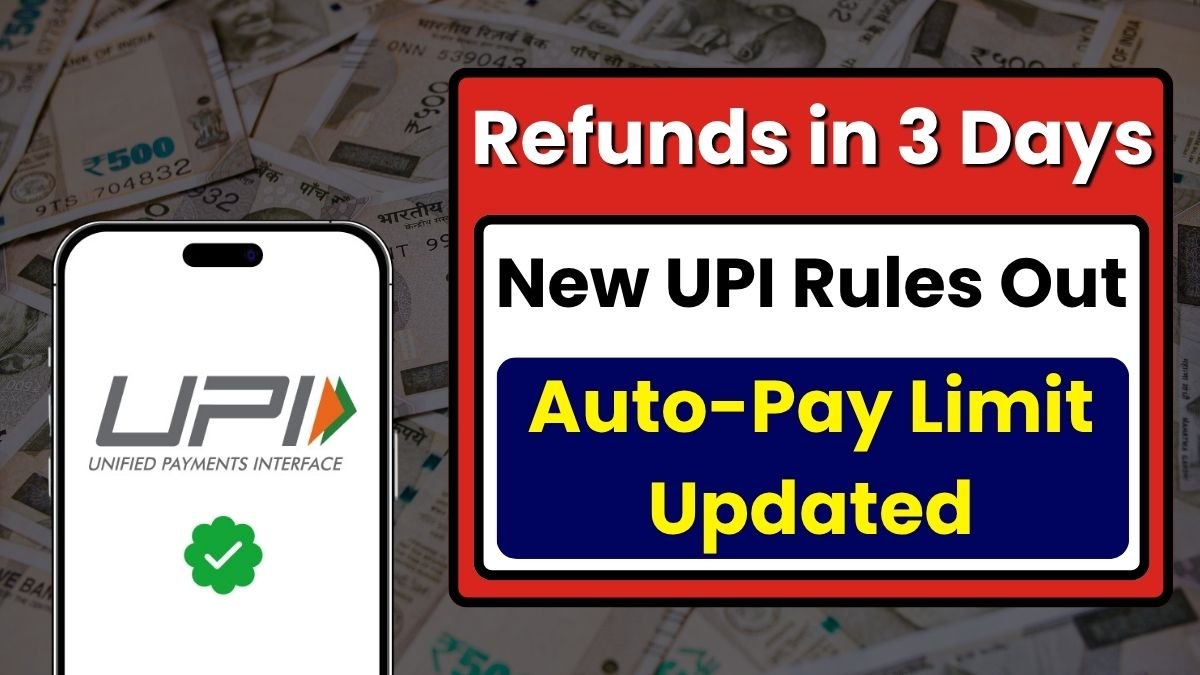If you use UPI every day — whether it’s paying for chai, sending money to a friend, or collecting payments for your business — the RBI’s new UPI guidelines will change the way you handle digital transactions. What surprised me most while reading through these rules is how deeply they focus on safety, transparency, and user protection.
And honestly, it’s about time. We’ve all heard stories of money disappearing through fake links or accidental transfers. These new rules aim to close those gaps so users feel safer and merchants can trust the system even more.
Why Did RBI Introduce New UPI Guidelines?
Here’s the thing — UPI is India’s most widely used digital payment system. When something becomes this popular, fraudsters get creative. The RBI’s new guidelines are basically a shield, designed to reduce scams, prevent misuse, and make sure every transaction is traceable and secure.
Think about it this way:
UPI has grown so fast that the rules needed a refresh. These updates are the guardrails to keep millions of people safe without making digital payments complicated.
What’s New in the RBI’s UPI Guidelines?
1. Auto-Pay Above ₹15,000 Now Needs Extra Verification
If you use auto-debit for subscriptions, EMIs, or monthly bills, here’s the update:
- Auto-payments up to ₹15,000 will continue normally.
- Anything above ₹15,000 will now need two-step authentication.
It’s a small extra step, but it protects you from unauthorized deductions.
2. Inactive UPI IDs Will Be Automatically Closed
If you haven’t used your UPI ID for 12 months, it will be deactivated.
Why?
Inactive IDs are easy targets for misuse.
Closing them reduces the chances of fraud or data leaks.
3. Refunds Will Now Be Much Faster (Within 3 Days)
If your money gets stuck due to a failed or wrong transaction, banks now must process the refund within three days.
No more waiting endlessly or chasing support teams.
4. Stronger UPI Fraud Alert System
RBI has asked NPCI and banks to work together on a more advanced fraud detection system.
This means suspicious activity will be flagged faster — sometimes even before you notice something’s wrong.
5. Detailed Transaction Alerts After Every Payment
Going forward, UPI apps must send clear notifications showing:
- Who sent the money
- Who received it
- Amount
- Time and reference details
This small change will help prevent confusion and detect fraud instantly.
How Do These Changes Help You?
From my experience, most digital payment issues come from confusion — unclear alerts, accidental payments, or slow refunds. These new rules target those exact pain points.
Here’s what you gain:
- Better Protection: Extra steps for high-value auto-payments mean fewer unauthorized deductions.
- Cleaner Digital Identity: Closing inactive UPI IDs reduces the risk of fraud.
- Faster Resolution: No one enjoys waiting for refunds — now you don’t have to.
- More Transparency: Clearer notifications make it easier to track your money.
In simple words, your UPI experience becomes safer, smoother, and more predictable.
Frequently Asked Questions
1. Do these new UPI guidelines apply to all banks?
Yes. Every bank and every UPI app — whether it’s PhonePe, Google Pay, Paytm, or any other — must follow these RBI rules without exception.
2. When will an inactive UPI ID be closed?
If your UPI ID stays unused for 12 months, it will be automatically deactivated to prevent misuse. You can always reactivate it later if needed.
3. Will refunds really be faster now?
Yes. RBI has made it mandatory for banks to return failed transaction amounts within a maximum of three days, improving customer satisfaction significantly.




